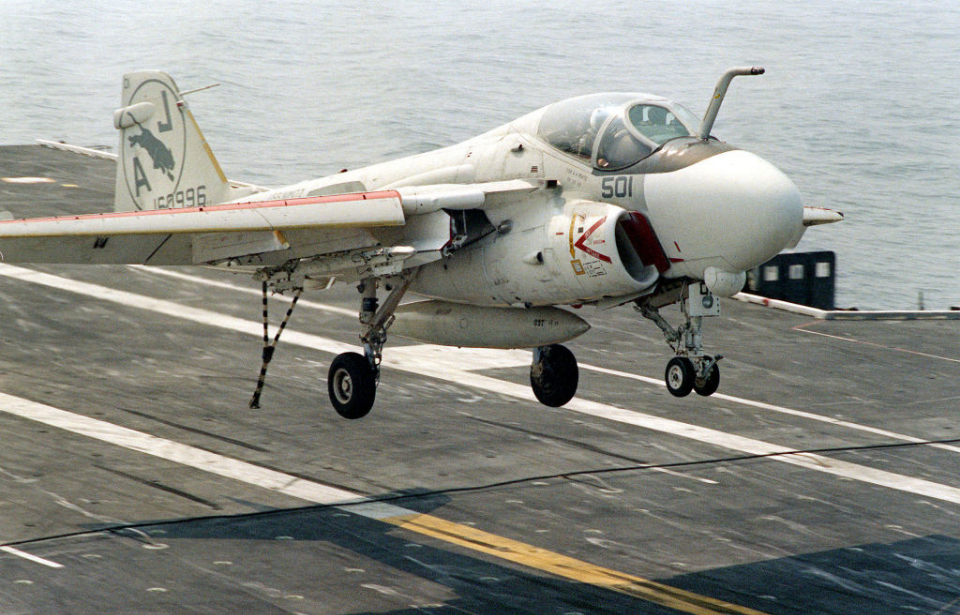Over the course of World War II and the Korean War, the use of aircraft saw a rapid increase. As a result, the technology of those used by the United States military improved dramatically. The Grumman A-6 Intruder was designed to address some of the concerns raised by pilots who’d flown during the US-involved conflicts.
Pilots wanted the ability to launch night attacks
During the Korean War, US military pilots largely carried out missions aboard Douglas A-1 Skyraiders. The Skyraider had significant limitations. It couldn’t be used in bad weather and its targeting system made it incredibly difficult to carry out nighttime missions.
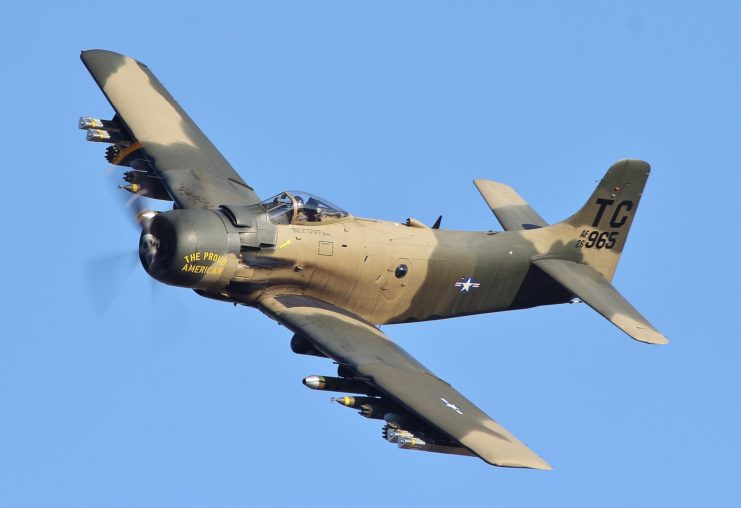
Shaped by conversations with pilots following Korea, the US Navy wanted future aircraft to fly without these limitations. In 1957, a request for proposal (RFP) was sent out to the country’s major aircraft manufacturers, asking for a “close air support attack bomber capable of hitting the enemy at any time.” Proposals were submitted by Bell, Lockheed, Boeing, North American, Douglas, Grumman, Martin and Vought.
In January 1958, the Navy announced Grumman had presented the winning bid.
The design process featured advanced technology
The design team for Grumman was led by Robert Nafis and Lawrence Mead, Jr. Mead later became known for his work on the F-14 Tomcat and the Lunar Excursion Module. The focus was on the functionality of the aircraft, rather than aesthetics. Thanks to its simple design, some referred to the A-6 as the “flying drumstick.”
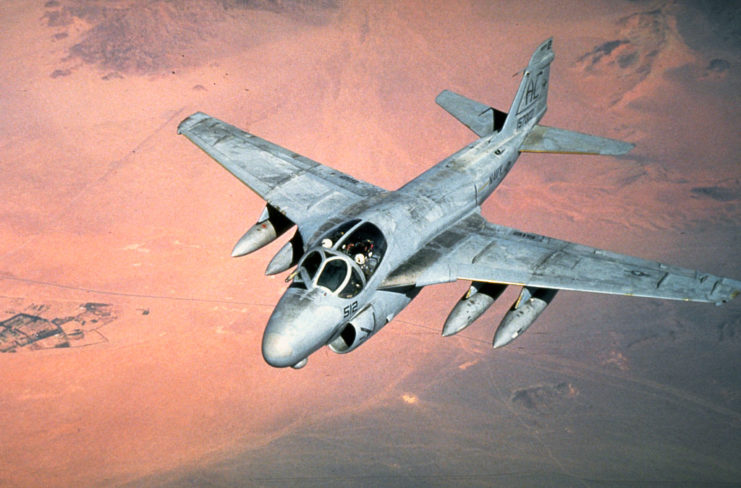
The design of the A-6 was considered very cutting edge. Despite being a fighter-size aircraft, the airplane featured sophisticated avionics that used multiple computers. Its wings were designed to be efficient, even when moving at supersonic speeds, and enabled the aircraft to maneuver easily when carrying large loads.
It was also designed to carry nuclear weapons. If needed, these weapons could be released via a semi-automated toss bombing, which would allow the A-6 to hit a target without flying directly over it, thus avoiding the bomb’s blast effects.
The A-6 Intruder was used extensively during the Vietnam War
The A-6 Intruder first entered into service in February 1963. Owing to its ability to conduct operations at all times and in any weather conditions, the aircraft were heavily used by the Navy and US Marine Corps. It was involved in a number of missions against enemy targets during the Vietnam War.
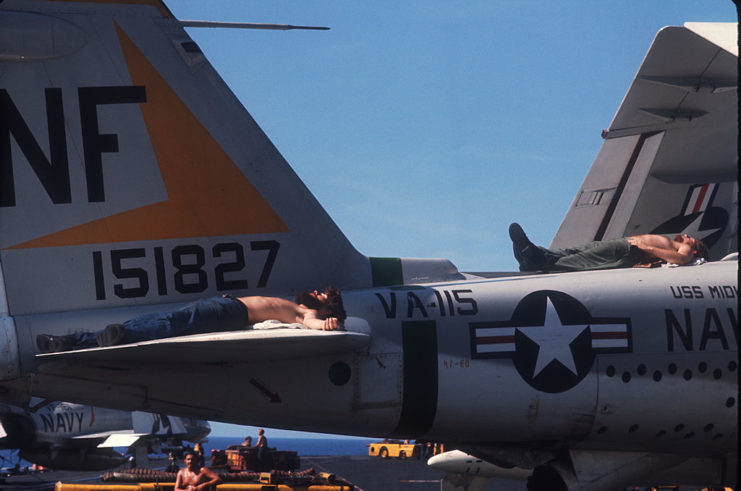
The A-6 was particularly effective due to its long-range and heavy payload capabilities. A typical mission, however, found it flying low to release its payload, making it vulnerable to anti-aircraft weaponry. Over the course of the war, 10 were shot down by surface-to-air missiles, while 56 more were downed by conventional ground fire and anti-aircraft weapons.
The A-6 Intruder was used in multiple conflicts
The A-6 Intruder was later used during a multinational peacekeeping mission in Lebanon in the early 1980s. After a terrorist bombing occurred in West Berlin in 1986, A-6s were used to drop bombs over Libya, in retaliation for the attack.
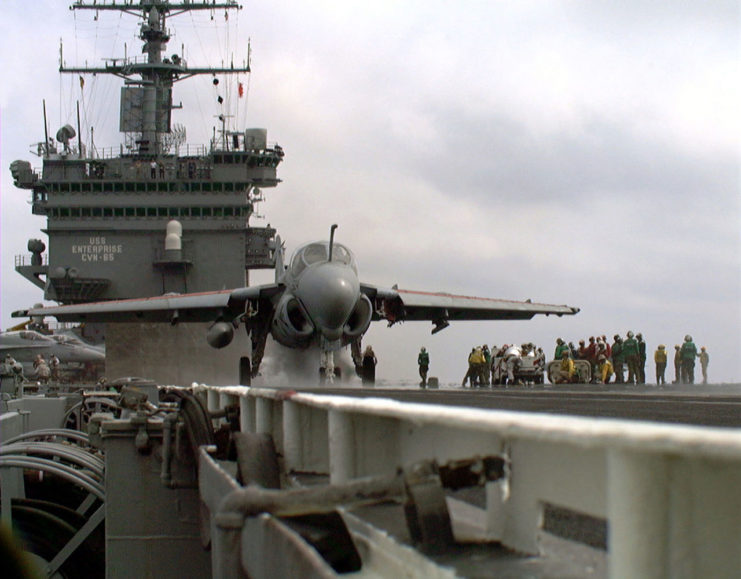
The aircraft were heavily used during Operation Desert Storm. A-6s flew 4,700 combat sorties, attacking Iraqi naval units, hitting strategic target and destroying enemy air defenses. Once the Gulf War came to an end, the planes was used to enforce a no fly zone in Iraq, after which they provided air support during 1993’s Operation Restore Hope in Somalia.
A-6 Intruders retired after 30-plus years of service
The last A-6 Intruders were officially retired in February 1997, although the Marine Corps had discontinued their use of the A-6E four years prior. They were first replaced by the F-14D Tomcat, after which that was swapped out for the F/A-18E/F Super Hornet in the Navy and the F/A-18D Hornet in the Marine Corps.
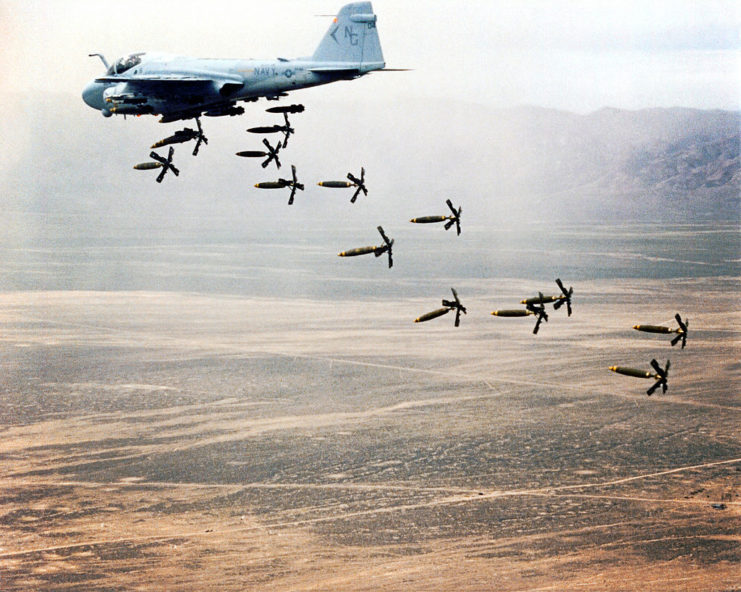
When the A-6’s retirement was announced, a number of the aircraft were awaiting re-winging at the Grumman plant. Those that had yet to be re-winged were sunk off the coast in Florida and made into “Intruder Reef,” while the ones that had been refurbished were put on display in various museums.
